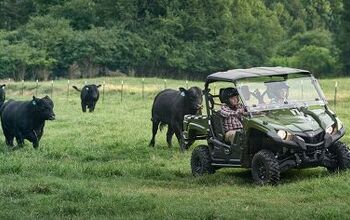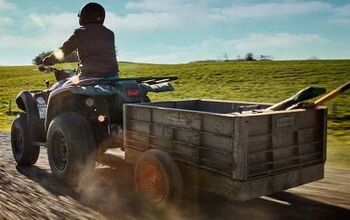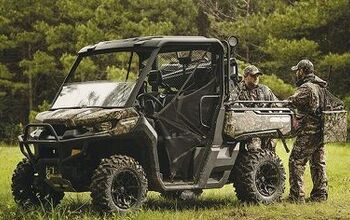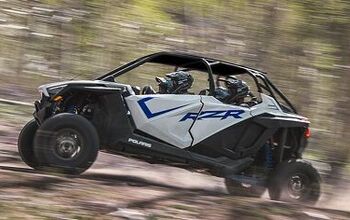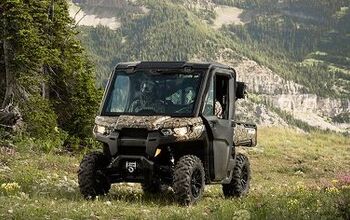Hitting the Trails with the Kawasaki Ridge and Ridge XR
Kawasaki did a great job with the string of teasers leading up to the unveiling of the new Ridge and Ridge XR machines. Everyone was guessing what the new machine was, and at first, a lot of us got the wrong idea. While there are those few out there who desperately wanted some new high-horsepower RZR killer and are mad that it isn’t that (Just be patient for things to come), what we did get is an all-new machine from Kawasaki that slots in between a Teryx-type machine and a Mule. The Ridge is built for adventure and fun, with a nod to those who want to be able to do a little utility-type stuff between trail rides. We had the preview ride at the Kawasaki Dealer’s Meeting, but now we’ve had some real-world testing on some challenging trails.
Two variations on a theme
Why a Ridge and a Ridge XR? Why not is more like it. Let’s chat first about what is the same between the two machines. They share the same ladder frame and geometry, and the bodywork is the same, too. Color options are different, obviously, and the motor is the same 999cc inline four-cylinder built by Kawasaki. Why an inline four? When that was teased, the horsepower crowd went nuts speculating how big the “official” rating would be. In the Ridge, it is 92 horses, and the XR comes in at 116. The end goal was not about speed and power, but smoothness, vibration dampening, and how that power is applied throughout the power curve. I can tell you from experience that Kawasaki nailed what they were going for.
Power delivery from both machines is deceptively smooth in that it is controllable and easy to drive. There are selectable power modes with each machine that give you a Normal mode, a Work mode, and a Sport mode. We rode these machines on the amazing Hatfield-McCoy trails in West Virginia and I found myself using Sport mode almost exclusively because I liked the snappier delivery for clearing the rugged terrain.
Unlike the Teryx, Kawasaki mounted the motor in the rear of the frame. This keeps even more noise and vibration away from the driver and passengers. I was a little hesitant at first because one of the many things I love about the Teryx is the mid-mounted engine that gives the machine such amazing balance. Kawasaki balanced out the Ridge exceptionally well, in my opinion. “Generally” speaking (hint hint), Kawasaki did a better job than others have in the space in giving the Ridge a balanced feel. This is important and obvious when you drive one, and notice - Kawasaki didn’t add any sway bars to the machine. The suspension helps out a lot, which we will get to here in a moment.
The difference in power between the Ridge and Ridge XR is noticeable, and if you want more performance, go with the XR. The difference between the two is a matter of tuning and they have differing exhausts. If you buy a Ridge and decide you want more power, it would seem fairly easy to bump the HP up with a few small tweaks.
Shared across both models is a 1,000lb cargo bed capacity that has an easy-operate dump lever. Both will tow 2,500 pounds, too, using a 2-inch receiver. Turning is a tight 15-foot radius and it feels even tighter, especially when you’re in two-wheel drive and scoot the rear end around using the throttle. Both units have full EPS and four-wheel drive with a locking rear differential. The XR, however, also comes with a locking front differential to help you be not stuck.
Serving a suspension
The Ridge and Ridge XR both have similar suspension setups. There are dual wishbone A-arms at all four corners, and Kawasaki did a great job in designing the shape and function of the arms. It helps with both the balance and stability of the machines. The shocks have preload adjustment and 12.7 inches of travel front and back, on both machines.
The XR rolls on 30-inch Duro tires, while the Ridge uses 27-inch Duro tires. The XR uses the same 10-inch wide tire front and back, while the Ridge uses a 9-inch tire in the front and an 11-inch wide tire for the rear. The different tire sizes help with stability, performance, and ground clearance. The XR has 13.8 inches of ground clearance, and the Ridge gets 12.6 inches. Max out the preload on the shock and gain an extra inch on both machines. We hit some deep ruts with both machines and came through with flying colors.
HVAC!
The machines we drove all had Kawasaki’s new HVAC system with heat and air conditioning. The first versions to hit the showroom floors will have HVAC, and Kawasaki expects it to be a popular option. The heat is amazing, and we ran it on the cold mornings and even found ourselves turning it down, or even over to air conditioning later in the ride. Hatfield was an interesting mix, with shaded parts of the mountains covered with a layover of snow, and other areas where that snow melted and formed some nice mud.
In conjunction with HVAC, Kawasaki developed an all-new cab system to go with the machines. It represents a new way of designing a cab so it feels more automotive-like in the fit and finish, as the cab was designed alongside the frame, so it feels like it is supposed to be there. The lines all flow together seamlessly, and there are no gaps. You get glass side windows with switches for up and down, and both sides can be controlled by the driver. The cabs also insulate the driver and passengers from outside noise, making it very comfortable to ride in. The windshield has a wiper with a switch on the dash, and yes, washer fluid, too. When I say the cab enclosure was designed with the machine, I am saying it doesn’t feel like an afterthought. You don’t look at it and think, “Oh, they added an accessory cab kit,” instead it looks like it is a normal part of the machine.
If you buy a Ridge model without a cab, and decide you want to add it, of course, they are offering the components separately, along with a heater. If you want A/C, though, buy the HVAC model. If I am plunking down my hard-earned cash for a Ridge, I’m going to spend the extra money and get an HVAC.
Limited
The Ridge unit we tested was actually the Ridge Limited, which is the top model and the first coming off the line. Besides the sweet copper color, the Limited gets the full HVAC and cab treatment, along with some added features you can only get on the Limited version. It has an 8-inch, built-in Garmin Tread system with machine diagnostics, ride-sharing info, and, obviously, off-road GPS. It is built into the dash on the Limited model and is not going to be offered as an accessory option at this time. The Tread also adds phone compatibility and a full stereo system that is pretty sweet. I’m normally not a big fan of stereo systems on UTVs due to the noise the machine makes tends to butt heads with the music, making for a whole lot of sounds slamming into your ears. On the Ridge Limited, however, it is pretty cool because of how well the cab isolates the sound of the machine. T
here are also front and rear-facing cameras that feed a display on the Tread, giving you added visibility when backing up or rock crawling. The front camera was amazing when we came to a seriously washed-out, rocky section of the trail that was challenging, to say the least.
The limited package also includes a front brush guard and rear bumper. Mounted up front, there is a Warn VRX 45-S winch with synthetic rope and a 4,500lb. Capability. It is loaded and cool, and again, if I am buying a Ridge, I would likely grab a Ridge Limited. Yes, the extras add to the price tag, but they are just too cool and handy not to get them.
On all Ridge models, there is a bench seat that is contoured for comfort. It can seat up to three and folds up for added cargo space, or your dog. My Newfoundland would LOVE it, as there is even enough room for her massive frame. It is a 60/40 split-bench, so you can fold up the passenger seats, and this also is how you access the air filter, which is easy.
XR, baby!
The Ridge XR differs from the Ridge in several ways. As you can guess, it is aimed at those wanting a little more performance and it has some key changes to fit that need. It has a 24-horsepower advantage that can be felt right from the start. It has a different exhaust note than the Ridge thanks to its muffler that is tuned for the additional power. One thing that can be said about both Ridge models is how different they sound from other UTVs, and it is really noticeable with the Ridge XR. The thing sounds kind of like a fighter jet.
Styling-wise the XR has the same basic bodywork as the Ridge, with one key exception. The XR has a slightly different grill with LED accent lights. It looks great and adds visibility on the trail. The XR also gets model-specific colors, and the Ice Grey version we drove looks sharp.
Inside the cab, you’ll notice different seats, with the XR having two high-back bucket seats instead of a three-person bench. There is a center console with cup holders and cargo space, but the cool thing here is that the entire center console pops out to give you fast and easy access to the air filter. Kawasaki has made great strides this year to make maintenance easy on their machines, and the air filters have a remarkably longer service life, too.
Driving the XR is a blast. It handles very well and the engine, especially in Sport mode, is snappy and fun. It can get up and move too, with top speeds in the 70s, yet there is enough low-end power that you don’t feel like you’re lacking when you’re chugging along through tough terrain. It is just a ton of fun. When you add in the HVAC model features, the XR becomes quite appealing.
Being picky
One of my biggest complaints is a minor comfort deal. I’m around the 6'1" mark, and where the seatbelt attaches above my shoulder, it came at a bad angle right across my neck. Not really bad, other than it got a little uncomfortable at times, and would distract me. It would be great if they added an adjustable seat belt slider for the shoulder strap.
I would also assume that at some point, Kawasaki will have a Limited version of the XR HVAC that adds a winch and the Garmin Tread system. It makes sense to have these as standard features in the model aimed at the adventure crowd. They do offer a wide range of accessories for both units, but if you’re looking for a complete package off the assembly line, it isn’t there yet for the XR.
Slotting in
There are a few questions you should ask yourself before deciding on which UTV to buy. Speaking just of Kawasaki, if you are using your UTV for work, buy a Mule. Want a little sporty feel with your Mule, get a Mule Pro FXR. Want something you can play with and get some work done, too? Go for a Ridge. The Ridge XR sits in a sweet spot between the Ridge and the Teryx. It has more power and top speed than a Teryx, but is not quite as rugged. There are places I would go with a Teryx that I wouldn’t attempt with an XR, but that line is pretty blurred. The Teryx is still an insanely popular sport machine and is one of those machines that can go just about anywhere. Its big brother the KRX is the ultimate go-anywhere, do-anything sport machine, and Kawasaki has hinted that a meaner KRX is coming down the line.
The Kawasaki Ridge XR HVAC that we tested comes with an MSRP of $31,999. The Ridge Limited with HVAC has an MSRP of $33,499. There are less expensive models coming without HVAC and such, but these two are the first that will be hitting your dealer showrooms.
Kawasaki said they have an aggressive plan to take a bigger share of the UTV and off-road market, and I think they are headed in the right direction. Once upon a time, they were an extremely conservative company, and now they are making big strides to bring more machines to market that fit the needs of what people want. I am a big fan of Kawasaki products and feel the Ridge is a great addition to the lineup.
Discuss this story on our Kawasaki Ridge forum
Derrek's love for all things ATV started when he was a mere 11 years old, growing up on his family farm. His mom gave him and his sister a choice - get a horse, or a three-wheeler. The sister wanted the horse, and Derrek wanted the ATV. Luckily he won out, and was soon burning up the trails on a Yamaha Tri-Moto 200. By the time he was 14, he had saved enough of his own money by working on the farm and in his folks restaurant to buy a new 4-wheeler. That happened the day he and his mom were driving past the dealership and saw 1987 Banshee. His mom had no idea what he was buying, and he never looked back. He's been riding ever since, and been writing professionally for many years. He has ridden all over North America and been behind the controls of just about every machine out there. And yes, he still has his 1987 Yamaha Banshee.
More by Derrek Sigler



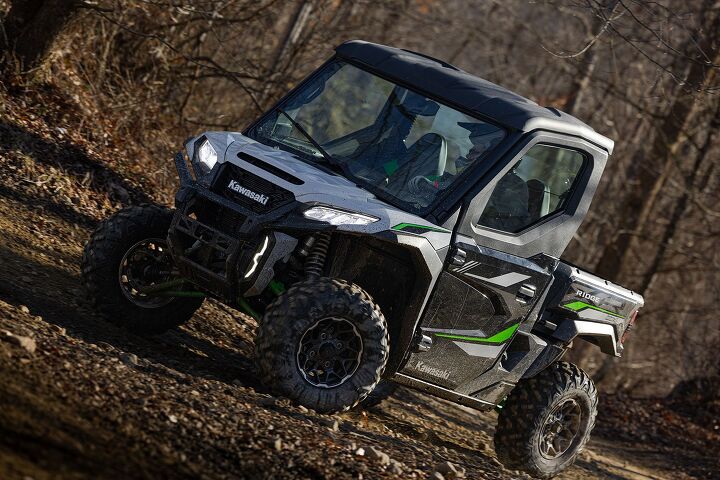

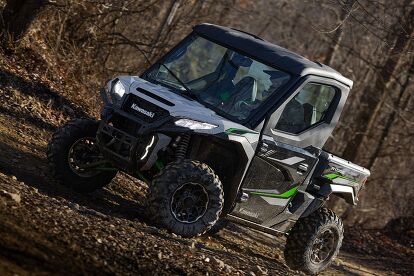















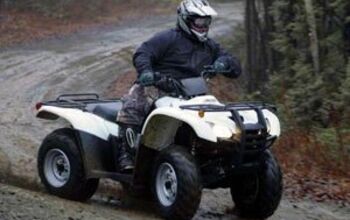
![More ATVs on Ice [video]](https://cdn-fastly.atv.com/media/2022/10/24/8742964/more-atvs-on-ice-video.jpg?size=350x220)



